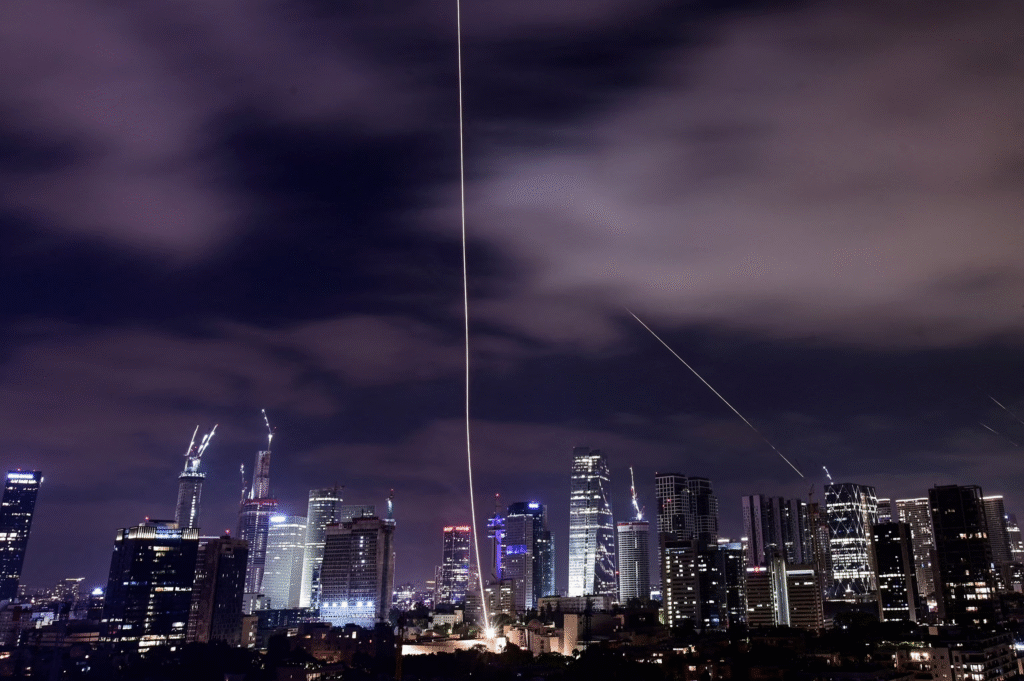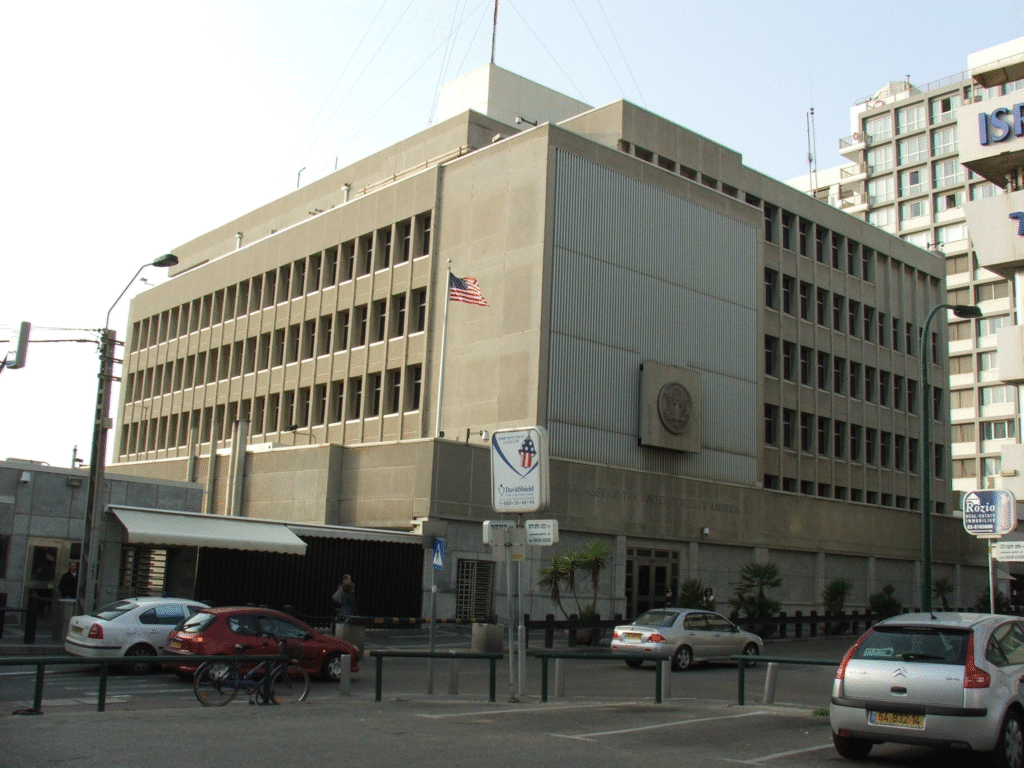I
Iran’s missile barrage on Israel, which began early Monday, June 16, 2025, marked a sharp escalation in the ongoing conflict between the two nations.

The attacks followed Israel’s unprecedented strikes on Iran’s nuclear and military infrastructure, which started on Friday. Iran’s retaliation targeted Tel Aviv and Haifa, hitting residential areas and critical infrastructure.
Explosions sounded across major Israeli cities, with air raid sirens forcing residents into shelters. Israel’s Iron Dome intercepted many missiles, but some evaded defenses, causing significant damage and loss of life.
US Embassy in Tel Aviv Damaged
The U.S. Embassy branch in Tel Aviv was caught in the crossfire. Ambassador Mike Huckabee confirmed “minor damage” from the shockwave of nearby missile strikes.

No injuries were reported among U.S. personnel, but the embassy and consulate shut down operations for the day. The U.S. issued a shelter-in-place order for its staff, urging American citizens to leave Israel via commercial flights while they remain available. This incident underscores the conflict’s ripple effects on foreign entities in the region.
In Haifa, a key port city, Iranian missiles struck near a power plant, sparking fires that burned for hours. British firm Ambrey reported the blaze after analyzing video footage of the attack. The strikes damaged pipelines and transmission lines, disrupting the local electricity grid.
Emergency responders rushed to the scene, with at least 30 people injured. The attack on Haifa’s infrastructure has heightened concerns about the conflict’s impact on Israel’s economy and energy supply.
Casualties Mount in Israel
The human toll in Israel continues to rise. In Bat Yam, south of Tel Aviv, a missile demolished a multistory apartment block, killing six, including a 10-year-old boy and a 9-year-old girl. Near Haifa, a residential neighborhood strike claimed five lives.
Israel’s emergency service, Magen David Adom, reported over 100 injuries, with rescue operations ongoing to find survivors trapped in rubble. The strikes have shocked Israelis, who are unaccustomed to such intense missile barrages.
Israel’s initial strikes on Iran, dubbed “Operation Rising Lion,” targeted nuclear facilities like Natanz and military command centers.
The operation, planned since September, aimed to curb Iran’s nuclear ambitions, which Israel views as an existential threat. Unconfirmed reports suggest Iran’s IRGC commander Hossein Salami and military chief Mohammad Bagheri were killed. Iran’s health ministry reported 224 deaths, with 90% civilians, fueling outrage and calls for retaliation.
The intensifying conflict has alarmed world leaders. At the G7 summit in Canada, discussions focus on preventing a broader Middle East war. Iran’s threat to form an “Islamic Army” with countries like Turkey and Pakistan has raised tensions.
Netanyahu warned that Iran’s actions would have severe consequences, while Iran’s Foreign Minister Abbas Araqchi defended the strikes as self-defense. Turkish President Recep Tayyip Erdogan and others called for urgent diplomatic talks to halt the violence. The conflict’s trajectory remains uncertain, with fears of further escalation growing.


 US and Pakistan Seal New Trade Deal with Promises and Oil
US and Pakistan Seal New Trade Deal with Promises and Oil  Trump Demands US Attorney General Share Epstein Data
Trump Demands US Attorney General Share Epstein Data  What’s Happening in Iran: India Urges Citizens to Exit
What’s Happening in Iran: India Urges Citizens to Exit  Trump Claims ‘Inflation Is Dead’ but June Surge Signals Otherwise
Trump Claims ‘Inflation Is Dead’ but June Surge Signals Otherwise  Did Israel’s Attack Really Injure Iran’s President?
Did Israel’s Attack Really Injure Iran’s President?